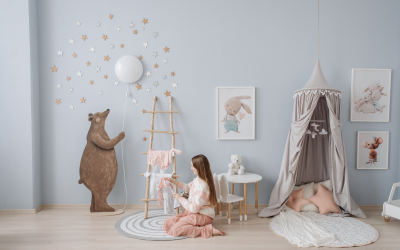Newborns are a source of wonder and joy, but they can also present unique challenges and health concerns. One such phenomenon that occasionally occurs in newborns is Harlequin colour change, characterized by unilateral erythema. This article aims to delve into this intriguing condition, exploring its causes, symptoms, and potential treatment options. As a knowledgeable SEO and senior copywriter, I will provide you with a comprehensive understanding of this topic to help you rank your article high in Google search results.
Understanding Harlequin Colour Change
Harlequin colour change is a rare condition that affects newborn infants. It is named harlequin fetus after the distinct appearance it creates, resembling the costume of a Harlequin character in traditional Italian theater. The primary symptom of this condition is unilateral erythema, which means the reddening of one side of the baby’s body while the other side remains normal or pale. The line of demarcation between the two sides is usually straight, following the midline of the body.
Causes of Harlequin Colour Change
The exact cause of Harlequin colour change is not yet fully understood, but it is believed to be related to the immaturity of the baby’s autonomic nervous system. This system controls various involuntary bodily functions, including the regulation of blood vessels. In newborns, this regulatory mechanism is not yet fully developed, leading to the appearance of unilateral erythema.

Symptoms and Presentation
Harlequin colour change typically presents shortly after birth, often within minutes. The affected side of the baby’s body takes on a bright red or deep pink hue, while the other side appears normal or pale. This striking contrast can be alarming for parents, but it is essential to understand that Harlequin colour change is generally a benign and self-resolving condition. The erythema tends to fade within a few minutes to hours, and the baby’s skin returns to its usual appearance.
Differential Diagnosis
Although Harlequin colour change is distinctive in its presentation, it is crucial to consider other potential causes of unilateral erythema in newborns. The following conditions should be ruled out:
1. Cutis Marmorata
Cutis marmorata is a temporary skin condition characterized by a mottled or marbled appearance. It occurs due to the dilation of blood vessels in response to cold temperatures. Unlike Harlequin colour change, cutis marmorata affects both sides of the body symmetrically and is triggered by environmental factors.
2. Hemangioma
Hemangiomas are benign growths of blood vessels that can appear on the skin. They can sometimes cause unilateral erythema, but they differ from Harlequin colour change as they tend to persist and grow over time. Hemangiomas may require medical intervention, depending on their size and location.
3. Vascular Malformation
Vascular malformations are abnormal formations of blood vessels, which can result in localized redness and swelling. Unlike Harlequin colour change, vascular malformations are not self-resolving and may necessitate medical evaluation and management.
Treatment and Management
In most cases, Harlequin colour change requires no specific treatment. The condition is transient and typically resolves on its own without any long-term effects. However, it is crucial for healthcare providers to educate parents about this phenomenon to alleviate concerns and provide reassurance.
If a baby’s unilateral erythema persists or is accompanied by other concerning symptoms, further evaluation may be necessary. This evaluation may involve a thorough physical examination, medical history review, and, in rare cases, additional diagnostic tests to rule out underlying conditions

In rare instances, Harlequin colour change can manifest as a severe and uncommon form known as paediatric harlequin syndrome. This condition is characterized by well-demarcated colour changes affecting larger areas of the body, accompanied by other symptoms such as abnormal skin conductance responses. Cutaneous blood vessels secondary to this syndrome may exhibit heightened reactivity, leading to pronounced and persistent erythema. It is important to note that paediatric harlequin syndrome is an exceptionally rare occurrence, and the vast majority of healthy newborns will only experience the transient and benign form of Harlequin colour change
Conclusion
Harlequin colour or harlequin color change is a fascinating yet harmless condition observed in newborn infants. It manifests as unilateral erythema, creating a striking contrast on the baby’s body. While the exact cause is not fully understood, it is believed to be associated with the immaturity of the autonomic nervous system. It is important for healthcare professionals to differentiate Harlequin colour change from other potentially concerning conditions through a thorough evaluation. By understanding and addressing parental concerns, we can provide appropriate reassurance and ensure the well-being of newborns.
Newborns are a source of wonder and joy, but they can also present unique challenges and health concerns. One such phenomenon that occasionally occurs in newborns is Harlequin colour change, characterized by unilateral erythema. This article aims to delve into this intriguing condition, exploring its causes, symptoms, and potential treatment options. As a knowledgeable SEO and senior copywriter, I will provide you with a comprehensive understanding of this topic to help you rank your article high in Google search results.
Understanding Harlequin Colour Change
Harlequin colour change is a rare condition that affects newborn infants. It is named harlequin fetus after the distinct appearance it creates, resembling the costume of a Harlequin character in traditional Italian theater. The primary symptom of this condition is unilateral erythema, which means the reddening of one side of the baby’s body while the other side remains normal or pale. The line of demarcation between the two sides is usually straight, following the midline of the body.
Causes of Harlequin Colour Change
The exact cause of Harlequin colour change is not yet fully understood, but it is believed to be related to the immaturity of the baby’s autonomic nervous system. This system controls various involuntary bodily functions, including the regulation of blood vessels. In newborns, this regulatory mechanism is not yet fully developed, leading to the appearance of unilateral erythema.

Symptoms and Presentation
Harlequin colour change typically presents shortly after birth, often within minutes. The affected side of the baby’s body takes on a bright red or deep pink hue, while the other side appears normal or pale. This striking contrast can be alarming for parents, but it is essential to understand that Harlequin colour change is generally a benign and self-resolving condition. The erythema tends to fade within a few minutes to hours, and the baby’s skin returns to its usual appearance.
Differential Diagnosis
Although Harlequin colour change is distinctive in its presentation, it is crucial to consider other potential causes of unilateral erythema in newborns. The following conditions should be ruled out:
1. Cutis Marmorata
Cutis marmorata is a temporary skin condition characterized by a mottled or marbled appearance. It occurs due to the dilation of blood vessels in response to cold temperatures. Unlike Harlequin colour change, cutis marmorata affects both sides of the body symmetrically and is triggered by environmental factors.
2. Hemangioma
Hemangiomas are benign growths of blood vessels that can appear on the skin. They can sometimes cause unilateral erythema, but they differ from Harlequin colour change as they tend to persist and grow over time. Hemangiomas may require medical intervention, depending on their size and location.
3. Vascular Malformation
Vascular malformations are abnormal formations of blood vessels, which can result in localized redness and swelling. Unlike Harlequin colour change, vascular malformations are not self-resolving and may necessitate medical evaluation and management.
Treatment and Management
In most cases, Harlequin colour change requires no specific treatment. The condition is transient and typically resolves on its own without any long-term effects. However, it is crucial for healthcare providers to educate parents about this phenomenon to alleviate concerns and provide reassurance.
If a baby’s unilateral erythema persists or is accompanied by other concerning symptoms, further evaluation may be necessary. This evaluation may involve a thorough physical examination, medical history review, and, in rare cases, additional diagnostic tests to rule out underlying conditions

In rare instances, Harlequin colour change can manifest as a severe and uncommon form known as paediatric harlequin syndrome. This condition is characterized by well-demarcated colour changes affecting larger areas of the body, accompanied by other symptoms such as abnormal skin conductance responses. Cutaneous blood vessels secondary to this syndrome may exhibit heightened reactivity, leading to pronounced and persistent erythema. It is important to note that paediatric harlequin syndrome is an exceptionally rare occurrence, and the vast majority of healthy newborns will only experience the transient and benign form of Harlequin colour change
Conclusion
Harlequin colour or harlequin color change is a fascinating yet harmless condition observed in newborn infants. It manifests as unilateral erythema, creating a striking contrast on the baby’s body. While the exact cause is not fully understood, it is believed to be associated with the immaturity of the autonomic nervous system. It is important for healthcare professionals to differentiate Harlequin colour change from other potentially concerning conditions through a thorough evaluation. By understanding and addressing parental concerns, we can provide appropriate reassurance and ensure the well-being of newborns.
Also interesting to read:
- What is Baby Blues? How does it Affect a Mother’s Life?
- Smoking Pregnancy: The Effects of Smoking on Mothers and Infants
- Teenage Pregnancy: Is it a Good Idea to Have a Baby in Teenage?
- Lower Back Pain Pregnancy: How to Treat it?
- Guide to Healthy Pregnancy and Prenatal Care
- Healthy Food of Pregnancy – The Ultimate Guide
- Calorie Calculator in Pregnancy: A Tool to Maintain Good Health
- When is a Baby no Longer a Newborn
- Natal Teeth – All you need to know about them!
- 10 Home Remedies to Treat Constipated Newborns
- CAN NEWBORNS GET COVID-19 VACCINE?
- What to Know About Cold in Newborn Babies
- 6 Reasons Your Baby Farts A Lot And How To Deal With It





